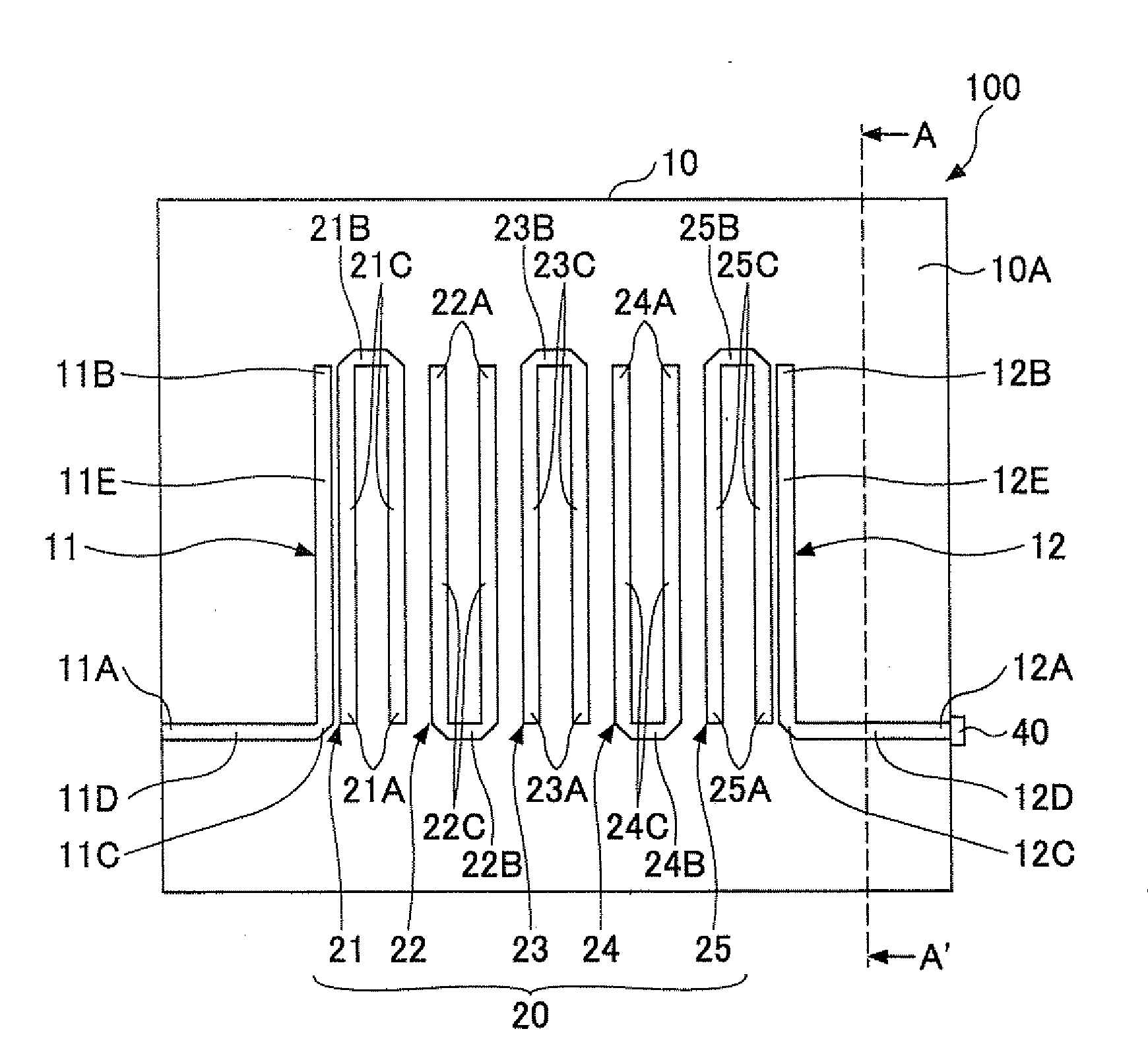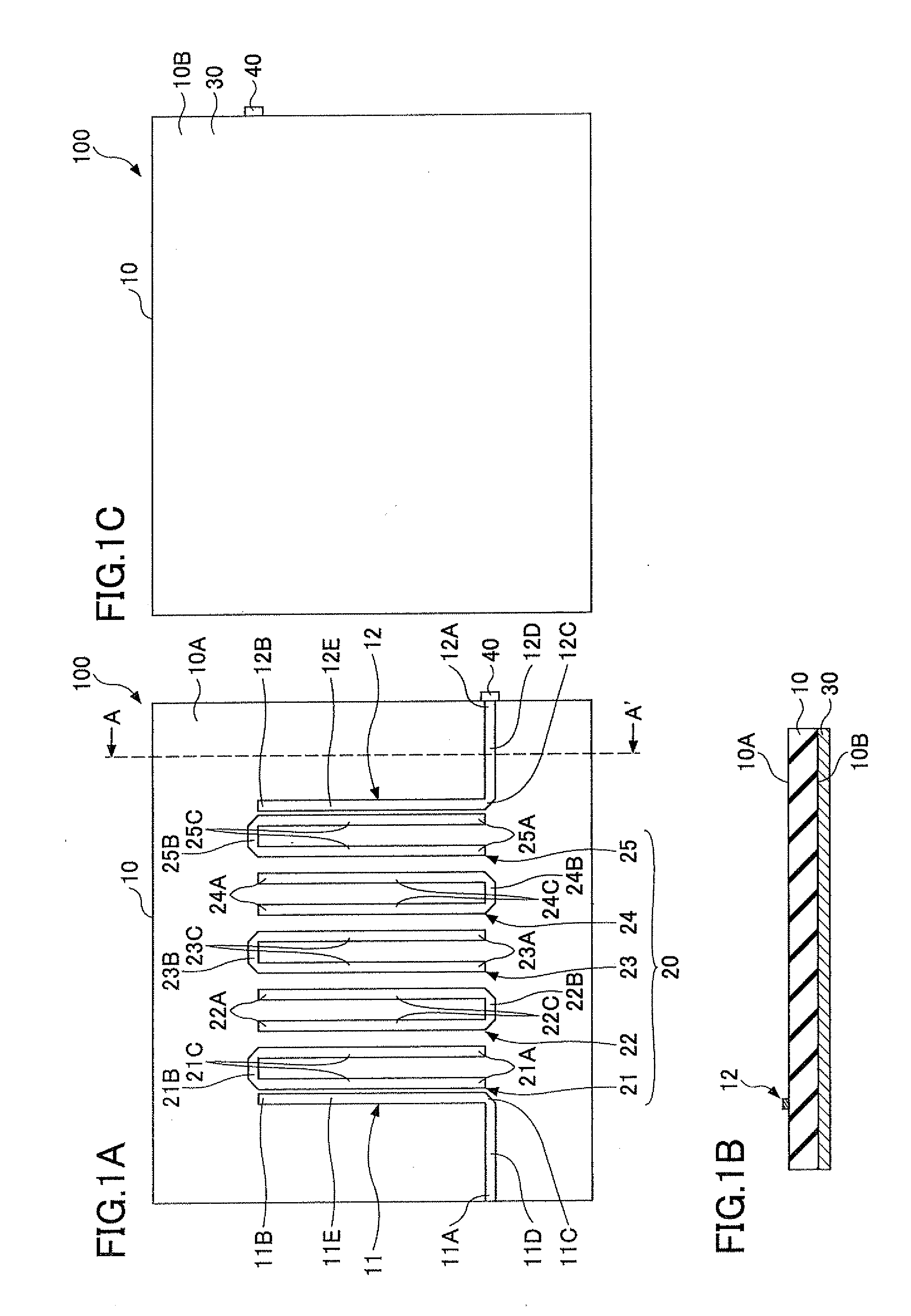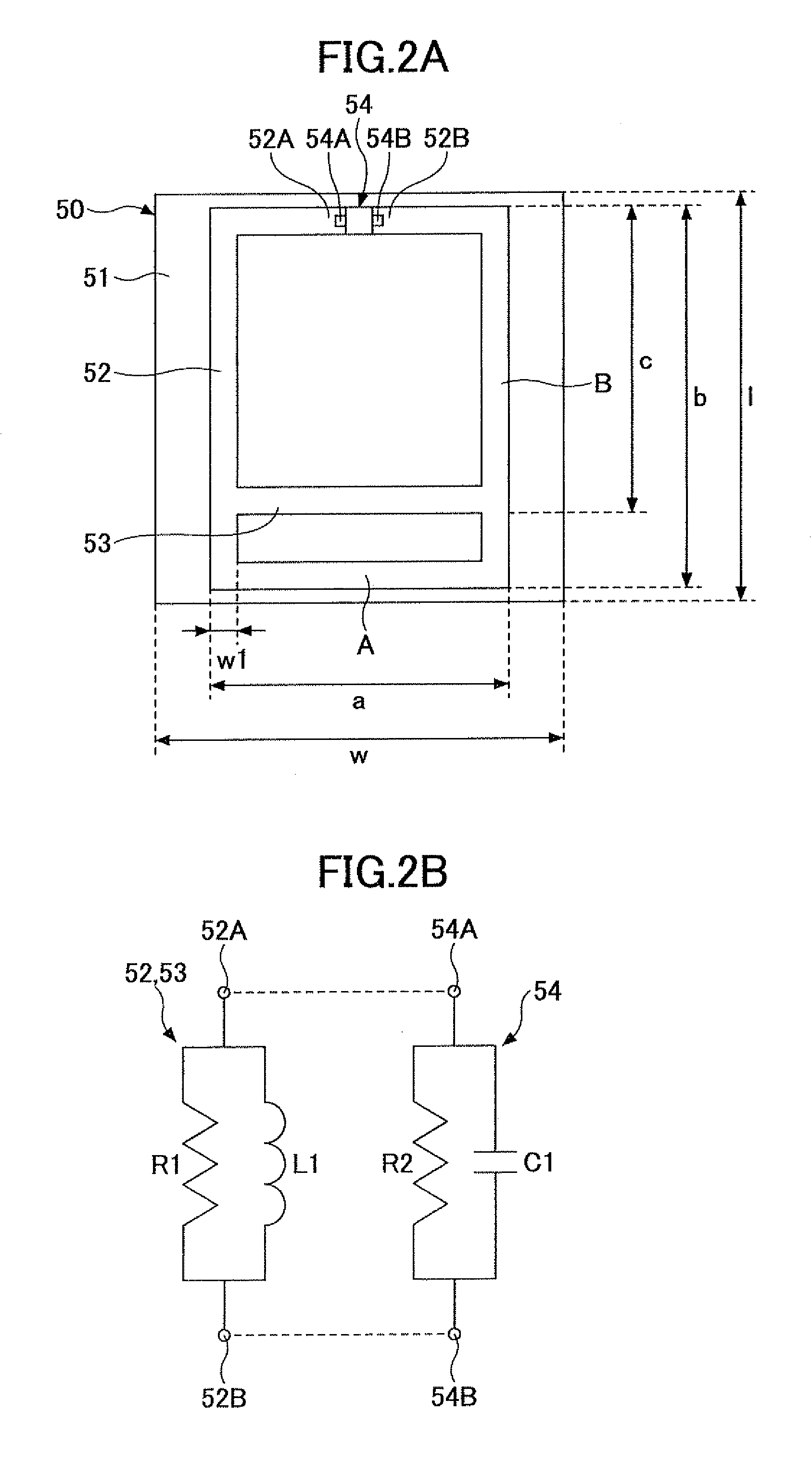Antenna device and system including antenna device
a technology of antenna device and antenna device, which is applied in the direction of antenna details, electrically long antennas, antennas, etc., can solve the problems of high manufacturing cost, large transmission loss, and inappropriate passive type for long distance communication
- Summary
- Abstract
- Description
- Claims
- Application Information
AI Technical Summary
Benefits of technology
Problems solved by technology
Method used
Image
Examples
first embodiment
FIGS. 1A through 1C illustrate an antenna device according to a first embodiment of the present invention. FIG. 1A is a plan view, FIG. 1B is cross-sectional view cut along a line A-A′ of FIG. 1A, and FIG. 1C is a bottom view. An antenna device 100 according to the first embodiment is connected to a reader / writer for reading identification information of RFID tags, and performs communications with nearby RFID tags. First, a description is given of the antenna device 100 with reference to FIGS. 1A through 1C, and then the RFID tags and the reader / writer are described with reference to FIGS. 2A through 3.
The antenna device 100 according to the first embodiment includes a printed-circuit board 10, power feeding lines 11 and 12 that are formed on a front surface 10A of the printed-circuit board 10, a resonator 20, and a ground plane 30 formed on a back surface 10B of the printed-circuit board 10.
For example, the printed-circuit board 10 is FR-4 (Flame Retardant Type 4; glass cloth base ...
second embodiment
FIG. 6A is a plan view of an antenna device 200 according to a second embodiment of the present invention, and FIG. 6B illustrates the antenna device 200 connected to the reader / writer 60.
In the antenna device 200 according to the second embodiment, shapes of a resonator 220 and power feeding lines 211 and 212 formed on the front surface 10A of the printed-circuit board 10 are different from those of the resonator 20 and the power feeding lines 11 and 12 of the antenna device 100 according to the first embodiment. Other elements of the antenna device 200 according to the second embodiment are the same as those of the antenna device 100 according to the first embodiment, and therefore, corresponding elements are denoted by the same reference numerals and are not further described. The following descriptions are relevant to differences between the first and second embodiments.
As illustrated in FIG. 6A, the resonator 220 includes five linear resonance elements 221, 222, 223, 224, and 2...
third embodiment
FIG. 7 is a perspective view of an antenna device 300 according to a third embodiment of the present invention.
The antenna device 300 according to the third embodiment is formed by connecting three antenna devices 100 according to the first embodiment in series. In the third embodiment, the three antenna devices 100 are denoted by reference numerals 100A, 100B, and 100C in order to be distinguished from one another. However, the antenna devices 100A, 100B, and 100C are the same as the antenna device 100 according to the first embodiment. Each of the antenna devices 100A, 100B, and 100C includes the resonator 20.
The end part 11A of the antenna device 100A is a power feeding point connected to a reader / writer. The end part 12A of the antenna device 100A is connected to the end part 11A of the antenna device 100B. The antenna device 100B receives power via the antenna device 100A.
The end part 12A of the antenna device 100B is connected to the end part 11A of the antenna device 100C. Th...
PUM
 Login to View More
Login to View More Abstract
Description
Claims
Application Information
 Login to View More
Login to View More - R&D
- Intellectual Property
- Life Sciences
- Materials
- Tech Scout
- Unparalleled Data Quality
- Higher Quality Content
- 60% Fewer Hallucinations
Browse by: Latest US Patents, China's latest patents, Technical Efficacy Thesaurus, Application Domain, Technology Topic, Popular Technical Reports.
© 2025 PatSnap. All rights reserved.Legal|Privacy policy|Modern Slavery Act Transparency Statement|Sitemap|About US| Contact US: help@patsnap.com



